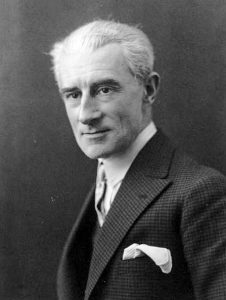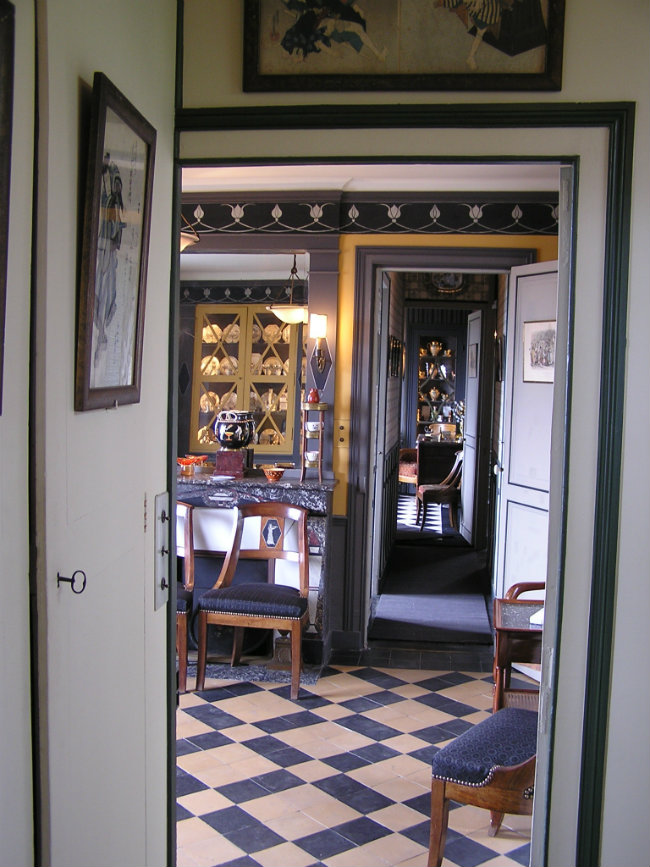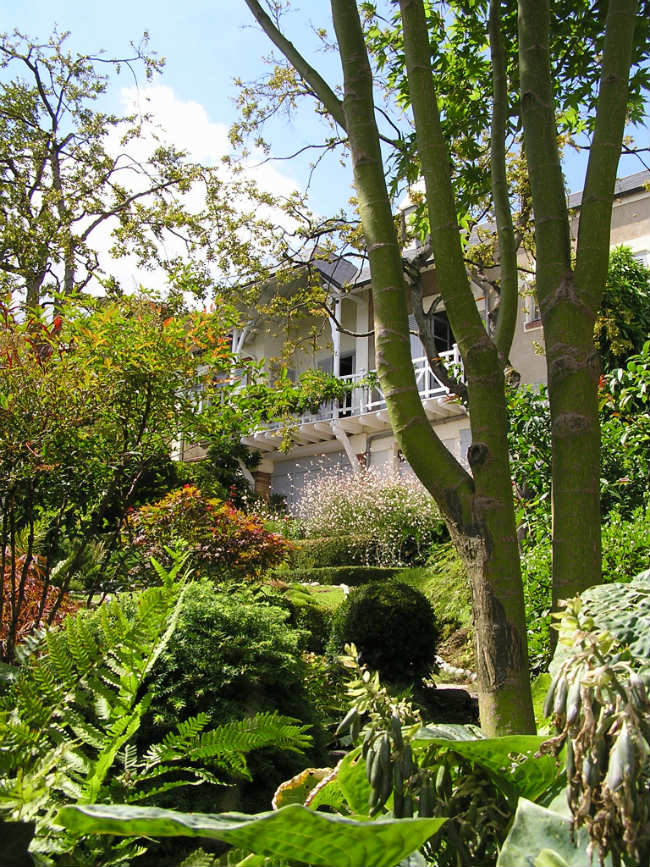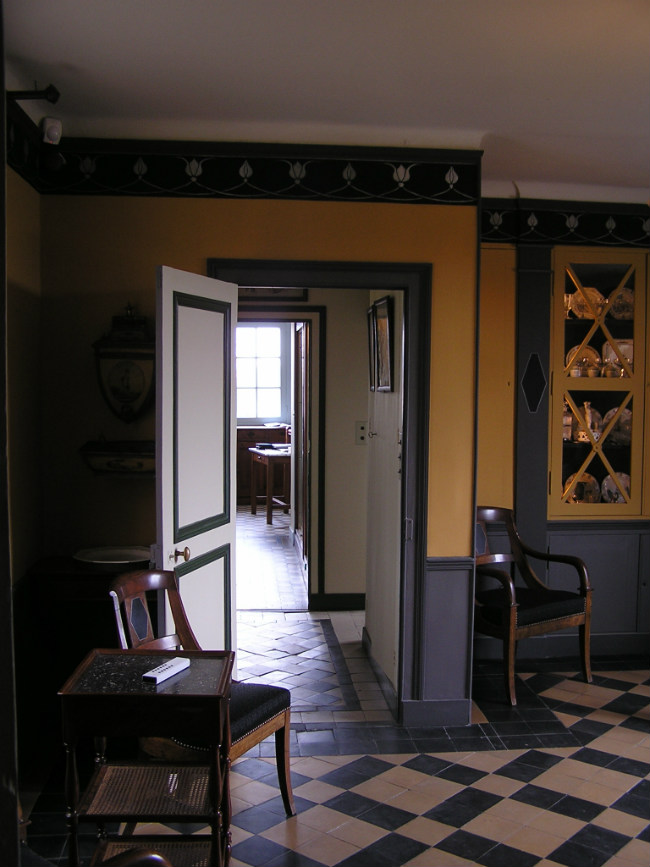Paris Day Trips: Explore the Former Home of French Composer Maurice Ravel

A short ride by train or car – just about an hour outside of Paris – and you arrive in another world: a small, pretty village not far from Rambouillet. Montfort-L’Amaury is well worth the journey for many reasons; best of all is to discover the eccentric charm of the former home of Maurice Ravel (1875-1937), the brilliant French composer whose work straddles two centuries.
It was here that Ravel – a man considered timid, private and discreet – wrote the powerful and sensual Le Boléro, a seminal work which broke with classical structures, combining Baroque, neoclassicism and jazz with an adventurous orchestral technique.
Ravel came into an inheritance in 1921, and deciding he needed a house away from the distractions of Paris and asked a friend to find him a ‘bicocque’ – a little house – and she did. A long rectangular structure atop a hill, the small villa was named the Belvedere; its views are indeed splendid. The beautiful verdant horizon of the Yvelines countryside beckons from the upper floor, while the lower leads to a small sloping ornamental garden.

Maurice Ravel’s former home in Montfort l’Amaury. Photo: Cecile Baumgarten

Gardens at Maurice Ravel’s former home in Montfort l’Amaury. Photo: Cecile Baumgarten
Ravel decorated the house himself with great originality and wit. We feel the soul and character of the composer; it’s as if he’s still here. Nothing has changed, not the stenciled ceiling borders he painted himself, nor the wall partition created to achieve greater symmetry in the salon. The furnishing is an eclectic mix of 18th century and Directoire styles, with bibelots, porcelain, miniature paintings, Chinese-style vases and Japanese prints. Ravel chose amusing touches such as checkerboard carpeting and hand-painted striped wallpaper resembling vertical musical partitions.

Maurice Ravel (1925)/ Public Domain
Fine family portraits line Ravel’s studio room, dominated by a large piano which Claude, the surveillant and guide of the house, invites guests to play. Ravel was very close to his mother, Marie Delouart, of Basque-Spanish origins. The songs she sang to him infuse elements of his Rhapsodie espagnol and L’heure espagnol; the dramatic beat of Le Boléro recalls bullfights and strident flamenco steps. His father, Pierre-Joseph Ravel, a Franco-Swiss, was a successful engineer, manufacturer and inventor, with a keen interest in music and culture in general. Highly educated, he apparently home-schooled his two sons.
Ravel initially followed in his footsteps as an engineer before turning to musical studies. He was accepted at the Conservatoire de Paris in 1889, and attended for a few years, being expelled and re-accepted twice, until abandoning it altogether in 1903. In spite of his talent and imagination, he was a plodding student who won few prizes and was considered ‘only teachable on his own terms’. After leaving the Conservatoire, Ravel would go on to compose his most important work, including Gaspard de la Nuit for piano, and Daphne et Chloé, commissioned by Diaghilev for the Ballets Russes. Diaghilev once referred to Ravel as the ‘Swiss Watchmaker’, a reference to the intricacy and precision of Ravel’s works.

The dining room with frieze. Photo: Cecile Baumgarten
Ravel ingeniously configured bookshelves to line only the upper walls of his tiny library room to allow an open area for sitting. It is stocked with French classics, which influence his early songs such as ‘Un grand sommeil noir’ and ‘D’Anne jouant de l’espinette’ set to words by Paul Verlaine and Clement Marot.
The house is dotted with curiosities and wind-up toys which Claude keeps in working order and is delighted to demonstrate. Ravel worked hard but enjoyed games and spending time with friends. He never married: it is believed that he had several long-term relationships and also frequented Parisian bordellos. He said that music was the love of his life.

Bedroom/bathroom at Maurice Ravel’s former home in Montfort l’Amaury. Photo: Cecile Baumgarten
A short flight downstairs leads to Ravel’s bedroom and bath, decorated in Moroccan style with a canopied bed. The adjoining black and white bathroom appears just as he left it, where his manicure and shaving utensils are carefully laid out. From the bedroom, Ravel had a view of his small garden where he enjoyed gardening and maintained a small greenhouse.
Ravel’s friends included at various times Claude Debussy, Erik Satie and Igor Stravinsky. Of diminutive height (5’3”) and meticulous in his appearance, it was said that he resembled a ‘well-dressed jockey’. He occasionally taught but was determined that students should find their own voice; for this reason he refused lessons to George Gershwin ins the 1920s, fearing they might “cause him to write bad Ravel and lose his great gift of melody and spontaneity.”
The composer served in World War I as a lorry driver, courageously driving munitions at night under heavy German bombardment. His ‘Piano Trio’ was almost complete when the conflict began. ‘Le tombeau de Couperin’, a suite celebrating the tradition of 18th century French composer François Couperin, is his most important wartime work: Each movement is dedicated to a friend of Ravel’s who died in the war. In 1928 Ravel toured more than 20 cities in North America, performing and conducting. At Carnegie Hall, the Boston Symphony Orchestra played an entire program of Ravel’s works under Serge Koussevitzky’s direction. Audiences were highly enthusiastic and he received critical acclaim.
Ravel’s mental and physical stamina diminished after the war, particularly following a 1932 automobile accident; he died in 1937 following neuro-surgery at the age of 62. Considered a master of orchestration, his musical legacy lives on in about 60 completed works, including pieces for piano, chamber music, piano concerti, ballet music, opera, and songs. As of May 2016, ‘Le Bolero’ is in public domain; his iconic work now belongs to everyone.

Garden view of Maurice Ravel’s home. Photo: Cecile Baumgarten
Practical information: You must reserve your visit to the Maison de Maurice Ravel in advance, because 6 persons are allowed at a time. Open from Wednesday-Sunday. Tickets 9.5 euros per person.
Contact: Maison du Tourisme et du Patrimoine, Montfort-L’Amaury: +33 (0)1 34 86 87 96
For admirers of Ravel it is a pilgrimage made even more worthwhile by a visit to the nearby 17th century St. Pierre Church, with its historiated sculpted keystone pendants. There is a wonderful choice of restaurants on the nearby square, and charming boutiques on the rue de Paris where you will also find La Caserne, a former firehouse converted into an excellent bistro.
Montfort L’Amaury has a selection of hotels and a B&B. We stayed at the Hotel St Laurent, a 17th century manor house in a tranquil setting with lovely garden.

Interior of Maurice Ravel’s home. Photo: Cecile Baumgarten
Lead photo credit : Maurice Ravel's piano. Photo: Cecile Baumgarten



REPLY